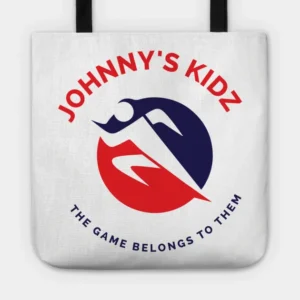Coaching Boys and Girls: Key Differences
Exploring the Unique Approaches to Coaching Boys and Girls in Youth Sports
Introduction
Overview of the Topic
When it comes to youth sports, coaching isn’t just about teaching the technical skills of a game; it’s about understanding the unique needs and characteristics of each athlete.
Gender-specific coaching refers to tailoring coaching strategies and approaches to better suit the developmental, psychological, and social differences between boys and girls.
This nuanced approach ensures that each athlete receives the most effective guidance and support, fostering a more inclusive and productive sporting environment.
In recent years, there has been a growing awareness among coaches, educators, and sports psychologists about the significant differences in how boys and girls experience and respond to sports coaching.
This awareness is crucial because it drives the development of more effective coaching practices that respect these differences.
Recognizing these distinctions helps coaches create environments where all athletes can thrive, maximizing their potential and enjoyment of the sport.
Importance of Understanding These Differences in Coaching
Tailored coaching strategies that consider the specific needs of boys and girls can lead to more effective learning and skill development.
Boys and girls often have different physical, cognitive, and emotional needs that influence how they train, compete, and interact with their teammates and coaches.
By understanding and addressing these needs, coaches can enhance the overall sporting experience, leading to better performance outcomes and higher levels of engagement and satisfaction.
When coaches adapt their methods to suit the unique characteristics of boys and girls, they can foster a more supportive and motivating environment.
This not only boosts athletic performance but also contributes to the personal development of young athletes.
Enhanced communication, increased motivation, and appropriate challenges tailored to the developmental stages of boys and girls can lead to improved self-esteem, stronger social skills, and a lifelong love for physical activity.
Understanding these differences is key to helping each young athlete reach their full potential both on and off the field.
Psychological and Developmental Differences
Physical and Cognitive Development in Boys and Girls
Key Physical Developmental Milestones and Differences
- Boys:
- Generally, experience a later onset of puberty compared to girls, usually between ages 12-14.
- Tend to develop greater muscle mass and strength, which can enhance performance in sports requiring power and speed.
- Boys often grow taller, and their cardiovascular systems develop to support endurance sports.
- Girls:
- Typically enter puberty earlier, around ages 10-12, leading to earlier growth spurts.
- Develop higher body fat percentages, which can influence performance in certain sports but is essential for overall health.
- Experience hormonal changes that can affect coordination, flexibility, and endurance.
Cognitive Development Stages and Gender Variations
- Boys:
- Often develop spatial awareness and motor skills earlier, which can benefit sports involving physical coordination.
- May exhibit higher levels of impulsivity and risk-taking, influencing their approach to training and competition.
- Girls:
- Tend to develop verbal and social skills earlier, which can aid in team communication and strategic planning.
- Show stronger abilities in multitasking and collaborative problem-solving, beneficial for team sports.
How These Differences Affect Learning and Performance in Sports
Impact of Physical Development on Sports Skills and Endurance
- Boys:
- The later growth spurt can result in a temporary disadvantage in sports that rely on height and strength until they catch up.
- Increased muscle mass and cardiovascular capacity contribute to success in power and endurance sports, like soccer and swimming.
- Rapid changes during puberty can lead to coordination challenges but also present an opportunity for significant skill development.
- Girls:
- Earlier physical maturity can offer a temporary advantage in sports emphasizing agility and coordination, such as gymnastics and figure skating.
- Hormonal fluctuations can affect energy levels and performance consistency, requiring tailored training and support.
- Enhanced flexibility and balance contribute to success in activities like dance and gymnastics, but they may need focused strength training.
Cognitive Development Influences on Learning Styles and Strategic Thinking
- Boys:
- Tend to excel in learning environments that incorporate competitive elements and clear, direct instructions.
- Benefit from drills that emphasize spatial awareness and physical challenges.
- Often respond well to strategies that include immediate feedback and reward-based motivation.
- Girls:
- Prefer learning methods that involve verbal instructions, collaborative activities, and detailed explanations.
- Thrive in environments where teamwork, communication, and strategic thinking are emphasized.
- Benefit from a supportive coaching approach that recognizes effort and improvement alongside performance outcomes.
Understanding these developmental differences is crucial for coaches to create effective, personalized training programs that cater to the unique needs of boys and girls in youth sports.

“Motivation in sports is not one-size-fits-all. Recognizing what drives boys and girls can transform their athletic experience, making it more fulfilling and rewarding.”
– Sarah Martinez, Motivational Speaker and Former Athlete
Communication Styles
Effective communication strategies for boys
- Detail direct and assertive communication methods
- Boys often respond well to direct and assertive communication. This involves giving clear, concise instructions and setting firm expectations. It helps to eliminate ambiguity and ensures that boys know exactly what is expected of them.
- For instance, during a drill, instead of saying, “Try to pass the ball,” a more effective approach might be, “Pass the ball to your teammate’s left foot.”
- Highlight the importance of clear instructions and structured feedback
- Clear instructions help boys focus on specific tasks and goals. Structured feedback, where positive and constructive comments are balanced, is crucial. This method reinforces what they did well while clearly pointing out areas for improvement.
- Example: “Great job on keeping your eye on the ball! Next time, try to follow through with your kick to gain more power.”
Effective communication strategies for girls
- Describe empathetic and supportive communication approaches
- Girls often thrive in environments where communication is empathetic and supportive. This means acknowledging their feelings and encouraging open dialogue. It’s essential to listen actively and validate their experiences.
- Example: “I noticed you were feeling frustrated after that play. Let’s talk about what happened and how we can approach it differently next time.”
- Stress the value of collaborative dialogue and positive reinforcement
- Collaborative dialogue involves engaging girls in conversations about strategies and decisions. Positive reinforcement boosts their confidence and fosters a supportive team environment.
- Example: “You did a fantastic job coordinating with your teammates. Your teamwork made a big difference in our defense today!”
Examples of successful communication techniques
- Provide real-life examples or anecdotes of effective communication in boys’ teams
- A story about a boys’ soccer team where the coach implemented a system of clear, direct commands and regular structured feedback can illustrate how the team improved their passing accuracy and overall game strategy.
- Example: “In our boys’ team, we started using a system where each player received a specific role with clear directives. This approach helped streamline our plays and significantly reduced errors during matches.”
- Share successful communication stories or techniques from girls’ coaching experiences
- Share an anecdote about a girls’ basketball team where the coach focused on empathetic communication and collaborative problem-solving, leading to improved morale and on-court performance.
- Example: “During a season with our girls’ team, we emphasized open communication and team discussions. By creating a safe space for sharing thoughts and ideas, the players felt more connected and motivated, resulting in a noticeable improvement in their teamwork and game outcomes.”
By recognizing and adapting to these communication styles, coaches can create a more effective and supportive environment for both boys and girls, ultimately leading to better performance and a more enjoyable sports experience for young athletes.
Motivational Factors
Key Motivators for Boys in Sports
- Competition
- Boys often thrive in competitive environments where they can measure their skills against others. The drive to win and outperform peers can be a powerful motivator.
- Achievement
- Setting and reaching goals, earning awards, and breaking personal records are strong motivators. Boys are typically motivated by the prospect of achieving milestones and tangible success.
- Recognition
- Public acknowledgment of their efforts and successes, such as praise from coaches, applause from spectators, and accolades, can significantly boost boys’ motivation. Recognition helps them feel valued and appreciated for their hard work.
Key Motivators for Girls in Sports
- Teamwork
- Girls often find motivation in working together as a cohesive unit. The sense of belonging and camaraderie with teammates can drive their commitment and effort.
- Personal Improvement
- The desire to improve skills and achieve personal bests can be a strong motivator. Girls may focus on self-improvement and mastering techniques as a source of satisfaction.
- Social Connections
- Building and maintaining friendships within the team can be a key motivator. The social aspect of sports, including support from teammates and forming lasting bonds, can enhance their overall experience and dedication.
How to Tailor Motivational Strategies to Each Group
- Leveraging Competition and Recognition for Boys
- Set Clear, Competitive Goals
- Establish specific, measurable goals that encourage boys to push their limits and compete against themselves and others.
- Create Competitive Drills and Challenges
- Incorporate competitive elements into practices, such as timed drills, scrimmages, and skill-based contests, to keep boys engaged and driven.
- Highlight Achievements Publicly
- Acknowledge individual and team achievements in front of peers, parents, and spectators. Use awards, certificates, and shout-outs to celebrate success.
- Encourage Leadership Roles
- Assign leadership roles, such as team captain or drill leader, to provide boys with a sense of responsibility and recognition.
- Set Clear, Competitive Goals
- Emphasizing Teamwork and Personal Growth for Girls
- Foster a Supportive Team Environment
- Encourage team-building activities and exercises that promote trust, cooperation, and a sense of community. Emphasize the importance of working together towards common goals.
- Focus on Individual Development Plans
- Create personalized development plans for each player, highlighting their progress and areas for improvement. Celebrate small milestones to keep them motivated.
- Promote Positive Reinforcement
- Use positive reinforcement to acknowledge effort and improvement. Provide constructive feedback in a supportive manner, emphasizing strengths and potential.
- Encourage Social Interactions
- Organize team bonding events outside of regular practices and games, such as team dinners, outings, or volunteer activities, to strengthen social connections and team unity.
- Foster a Supportive Team Environment
By understanding and leveraging these key motivators, coaches can create an environment that inspires both boys and girls to reach their full potential in sports.
Coaching Techniques
Specific Techniques That Work Well for Boys
When it comes to coaching boys, there are a few techniques that consistently yield positive results. Competitive drills are a cornerstone.
Boys often thrive in environments where they can directly measure their progress against their peers.
This doesn’t just foster a healthy sense of competition; it also helps them build resilience and a growth mindset.
Introducing goal setting into their routines can further enhance this competitive edge.
Clear, achievable goals give boys something tangible to strive for, transforming their drive into structured progress.
Structured practice sessions are another key element. Boys generally respond well to routine and clarity.
A well-organized practice not only keeps them engaged but also maximizes the efficiency of each session.
Each drill should have a purpose, and every session should have a clear focus.
This helps in maintaining their attention and ensures that every minute spent on the field is productive.
Specific Techniques That Work Well for Girls
Coaching girls requires a slightly different approach, one that emphasizes cooperation and inclusivity.
Cooperative activities are essential. Girls often excel in environments that foster teamwork and mutual support.
Drills that require collaboration not only build technical skills but also strengthen the bonds between team members, creating a cohesive unit that can rely on each other both on and off the field.
Inclusive drills are also vital. Ensuring that every girl feels valued and included can significantly boost their confidence and engagement.
This might mean adapting certain exercises to cater to varying skill levels or ensuring that every player has a chance to shine during practice.
Encouraging peer support further bolsters this inclusive environment.
When girls are encouraged to lift each other up, it creates a positive, empowering atmosphere that can transform the entire team dynamic.
Case Studies or Examples of Successful Coaching Methods
Let’s bring these techniques to life with a couple of real-world examples.
A boys’ soccer team I coached a few years back was struggling with consistency and motivation.
We implemented a series of competitive drills and set weekly goals for each player.
By the end of the season, not only had their skills improved dramatically, but their overall team spirit was also at an all-time high.
They learned to push each other towards excellence, and the structured practice sessions gave them a clear path to follow.
On the other hand, a girls’ basketball team I worked with experienced significant growth through cooperative and inclusive drills.
We introduced exercises that required them to work together to achieve a common goal, fostering a sense of unity and shared purpose.
Encouraging peer support was transformative.
The girls began to see each other not as competitors for playing time but as essential partners in their collective success.
This shift in perspective led to a more cohesive team, both in terms of performance and camaraderie.
These experiences highlight the profound impact that tailored coaching techniques can have.
Challenges and Solutions
Coaching youth sports comes with its fair share of challenges, and understanding these obstacles is the first step towards overcoming them.
Boys and girls present different sets of challenges and addressing them with tailored solutions can make all the difference in their development and enjoyment of the sport.
Common Challenges in Coaching Boys and How to Overcome Them
Managing Aggression
Boys often channel their energy into physicality, which can sometimes manifest as aggression on the field.
This intensity, while useful in certain contexts, can disrupt the game and create a negative environment.
The key is to channel this energy constructively.
Solutions:
- Implement Structured Drills: Utilize drills that emphasize control and precision. This not only hones skills but also instills discipline.
- Set Clear Boundaries: Establish and enforce rules around acceptable behavior. Consistent consequences for aggressive actions can help boys understand the importance of self-control.
- Promote Sportsmanship: Regularly emphasize the values of respect and fair play. Recognize and reward displays of good sportsmanship to reinforce positive behavior.
Maintaining Focus
Boys often have boundless energy, which can lead to distractions and a lack of focus during practice and games.
Solutions:
- Short, Intense Practice Sessions: Keep practices dynamic and engaging with varied activities that require concentration. Shorter, high-intensity drills can maintain their interest.
- Clear Objectives: Set specific, achievable goals for each session. Boys are often motivated by targets and enjoy the challenge of meeting them.
- Interactive Coaching: Use interactive and hands-on coaching methods. Involve boys in demonstrations and decision-making to keep them engaged.
Fostering Teamwork
Boys can sometimes struggle with the concept of teamwork, particularly when individual achievement is highly valued.
Solutions:
- Team-Building Activities: Incorporate exercises that require cooperation and collective effort. This can build camaraderie and emphasize the importance of working together.
- Role Assignment: Clearly define each player’s role within the team. When boys understand how their position contributes to overall success, they are more likely to embrace teamwork.
- Highlight Team Success: Celebrate team achievements over individual accomplishments. This shifts the focus from personal glory to collective success.
Common Challenges in Coaching Girls and How to Overcome Them
Building Confidence
Girls often face issues related to self-confidence, which can impact their performance and willingness to take risks in sports.
Solutions:
- Positive Reinforcement: Regularly acknowledge and praise efforts and improvements, no matter how small. This boosts morale and encourages continuous effort.
- Skill-Building Drills: Design drills that progressively build skills and confidence. Success in smaller tasks can lead to increased confidence in more complex situations.
- Mentorship: Encourage older or more experienced girls to mentor their younger teammates. This can provide role models and foster a supportive environment.
Ensuring Inclusivity
Girls may sometimes feel excluded or undervalued, which can affect team cohesion and individual participation.
Solutions:
- Inclusive Coaching Practices: Make a conscious effort to include all players in activities and decisions. Rotate roles and responsibilities to ensure everyone feels valued.
- Open Communication: Create an environment where girls feel comfortable expressing their thoughts and concerns. Regular check-ins can help address any feelings of exclusion.
- Diverse Activities: Plan a variety of drills and games that cater to different strengths and interests, ensuring that each girl finds something she excels at.
Overcoming Social Dynamics
Social relationships can significantly impact girls’ experience in sports.
Issues like cliques or peer pressure can affect team harmony and individual confidence.
Solutions:
- Team-Bonding Exercises: Regularly scheduled activities that foster team unity and break down social barriers. These can be both sports-related and purely social.
- Conflict Resolution: Equip girls with skills to resolve conflicts amicably. Role-playing scenarios and guided discussions can be effective.
- Promote Inclusivity: Encourage a culture of inclusivity and support. Highlight the importance of every team member and the unique strengths they bring.
In navigating these challenges, the goal is to create a positive, supportive environment where both boys and girls can thrive.
“Understanding the unique needs of boys and girls in sports is crucial for fostering their growth and confidence. Tailored coaching not only improves performance but also builds a foundation for lifelong athletic and personal development.”
– Dr. Amanda Parker, Sports Psychologist

Conclusion
As we draw to a close, let’s take a moment to recap the main differences between coaching boys and coaching girls in youth sports.
Throughout this exploration, we’ve seen how physical and cognitive developmental variations between boys and girls can significantly influence their learning and performance.
Boys often thrive on direct, assertive communication and are driven by competition and recognition.
Girls, on the other hand, respond well to empathetic, supportive communication and are motivated by teamwork and personal improvement.
Understanding and addressing these differences is crucial.
By tailoring our coaching strategies to meet the unique needs of boys and girls, we not only enhance their athletic performance but also foster a more positive and inclusive sporting environment.
This understanding helps us build stronger, more resilient athletes who are equipped to face challenges both on and off the field.
Reflecting on the positive outcomes of gender-specific coaching strategies, it’s evident that when we adapt our methods, we create a supportive atmosphere that nurtures the potential of every young athlete.
Boys benefit from structure and competition, while girls flourish in environments that emphasize collaboration and personal growth.
These tailored approaches do more than just improve skills; they build confidence, resilience, and a lifelong love of sports.
So, as coaches, our journey doesn’t end here.
We must continually learn and adapt our methods, always striving to understand our athletes better.
By doing so, we ensure that we are not just coaching a sport, but also shaping the character and future of the young individuals we guide.
Let’s commit to this ongoing process of learning and adaptation, for the benefit of all the young athletes entrusted to our care.
FAQ
Q: Why is it important to understand the differences between coaching boys and girls?
A: Understanding these differences helps create effective, inclusive, and motivating environments for all athletes.
It ensures that coaching methods are tailored to meet the unique needs of both boys and girls, enhancing their development and performance.
Q: What are the key differences in motivational factors between boys and girls in sports?
A: Boys are often motivated by competition, achievement, and recognition.
Girls, meanwhile, are driven by teamwork, personal improvement, and social connections.
Tailoring motivational strategies to these differences can significantly boost engagement and performance.
Q: How can communication styles impact coaching effectiveness?
A: Boys typically respond well to direct, assertive communication, while girls benefit from empathetic and supportive dialogue.
Effective communication builds trust, clarity, and a positive learning environment, essential for successful coaching.
Q: What are some challenges specific to coaching boys and girls, and how can they be overcome?
A: Common challenges with boys include managing aggression and maintaining focus, while girls may struggle with confidence and social dynamics.
Overcoming these challenges requires tailored strategies such as structured practices for boys and confidence-building exercises for girls.
Q: Can you provide examples of successful gender-specific coaching techniques?
A: For boys, competitive drills and goal setting are highly effective.
For girls, cooperative activities and inclusive drills work well.
Real-world examples and case studies highlight how these tailored techniques can lead to significant improvements in performance and team cohesion.
Call to Action
Join Coach Johnny in cultivating the next generation of youth sports athletes.
As coaches, our role extends beyond teaching sports skills—we are mentors shaping the future of young athletes.
Let’s commit to understanding and embracing the differences in coaching boys and girls.
By tailoring our methods, we can create a positive and inclusive environment where every athlete can thrive.
Join me in this journey of continuous learning and adaptation.
Subscribe to our newsletter for more insights and strategies to enhance your coaching approach.
Together, we can make a lasting impact on the lives of young athletes. Bottom of Form
Join the JK Tribe
Coach Johnny is a youth sports coach with over 30 years of experience. He continues to coach various sports in various age groups (pre-high school) for all genders. He is also the founder of Johnny’s Kidz and the JK Tribe. If you would like to support his journey and become a Tribe member, reach out and Buy Coach A Cup of Coffee.
Remember, The Game Belongs to Them!
DISCLOSURE: We often review or link to products and services we regularly use and think you might find helpful. We use referral links wherever possible, which means if you click one of the links in this video or description and make a purchase, we may receive a small commission or other compensation.
We’re big fans of Amazon, and many of our links to products/gear are to those products on Amazon. We participate in the Amazon Services LLC Associates Program, an affiliate advertising program designed to allow us to earn fees by linking to Amazon.com and related sites.





